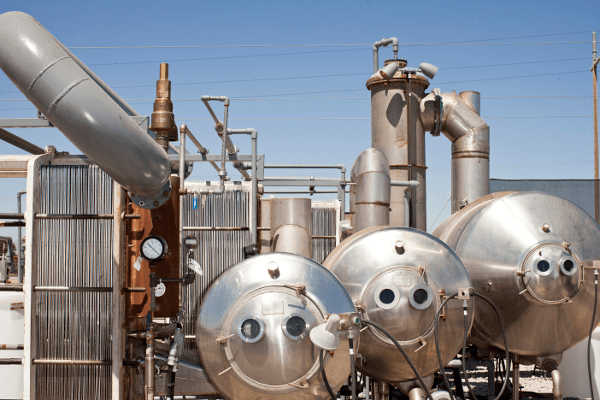
California is experiencing a third year of drought. Researchers studying tree rings found that the last time California experienced a drought this severe was 500 years ago.
California is a leading agriculture producer, and much of that farming takes place in the San Joaquin Valley. Farming and ranching in the San Joaquin Valley requires much irrigation, and irrigation water deliveries are expected to be reduced by 50 percent or more this year. About 2 million acres in the San Joaquin Valley are expected to not receive any water this year under contracts with the State Department of Water Resources or federal Bureau of Reclamation.
The California coastline hugs a huge body of water, the Pacific Ocean, but it is too salty to be used for drinking water or irrigation. Desalination can take that salty water and produce drinking water, but traditional desalination technology is costly and produces large amounts of harmful emissions.
One company just might make desalination less costly to both the bottom line and the environment. The Panoche Water District, a privately held company in the San Joaquin Valley, and WaterFX teamed up to create a solar desalination facility in Firebaugh, Calif. The desalination technology is WaterFX's Aqua4 technology. The 6,500-square-foot facility in Firebaugh is powered by solar energy and produces up to eight gallons of water per minute from salty water. Plans are underway to increase the facility’s production to 2,200 acre-feet a year.
Firebaugh is located in the western part of Fresno County, an area long plagued with irrigation problems. The Panoche Water District and Drainage District serves over 44,000 acres of the Valley in and around Firebaugh, which includes farms growing almonds, tomatoes, melons, asparagus, pistachios and alfalfa. Panoche gets water from the Bureau of Reclamation out of Shasta Dam in Northern California which travels through the Sacramento River to the Delta region and is pumped into the Central Valley Project delivery system in Tracy, Calif. It then travels about 45 miles to the San Luis Reservoir. There is saline in the irrigated water, and lack of drainage in that part of Fresno County causes a major problem. The saline levels in some of the water have a content greater than seawater.
WaterFX’s Aqua4 system is different from traditional seawater desalination, which is done with reverse-osmosis (RO) process and requires a great deal of electricity. The Aqua4 system uses advanced solar absorption technology and produces more than 200 acre-feet of freshwater per acre of solar collection area. RO needs high pressure to push freshwater through a membrane, and water recovery rate is 50 percent. For every 100 gallons of water processed with RO, 50 gallons of freshwater are recovered and 50 gallons of brine are disposed (causes environmental problems). Aqua4 recovers 93 percent of freshwater. For every 100 gallons treated, only seven gallons of brine are produced.
The brine that is produced has a high concentration of salt (20 percent salt by weight) and using salt separators, solids can be produced from the solution. That is something which is not economically feasible with RO because of the vast amounts of brine. Phase 2 of the Panoche project, expected to be completed by September 2014, will show the types of solid byproducts that can be produced and sold through the Aqua4 desalination system without causing environmental damage. Gypsum, a calcium based salt used to make drywall and plaster, is one example of a byproduct. Another example is magnesium salts, which are in the drainage water and magnesium sulfate is used in the medical industry to treat pain and complications during pregnancy.
Photo: WaterFX

Gina-Marie is a freelance writer and journalist armed with a degree in journalism, and a passion for social justice, including the environment and sustainability. She writes for various websites, and has made the 75+ Environmentalists to Follow list by Mashable.com.














